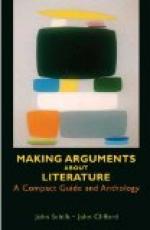[This extract from Dr. Reed’s paper describes in careful scientific detail the experiments which finally established the fact that the contagion came through mosquitoes, and in no other way. Into a small house, thoroughly air-proof, were brought bedclothes, clothing, and other articles which had been contaminated by yellow fever patients. Then for twenty days men who were nonimmune to the fever slept in this building, with no evil effects. This experiment was repeated several times. Then in another building similar, except that it was ventilated by mosquito-proof windows, and had been thoroughly disinfected, another volunteer was bitten by mosquitoes which had first bitten patients suffering with yellow fever; and he developed the disease. The last paragraph of the extract is as follows:]
“Thus at Camp Lazear, of seven nonimmunes whom we attempted to infect by means of the bites of contaminated mosquitoes, we have succeeded in conveying the disease to six, or 85.71 per cent. On the other hand, of seven nonimmunes whom we tried to infect by means of fomites [cloth and other material generally capable of carrying germs] under particularly favorable circumstances, we did not succeed in a single instance.”
It is evident that in view of our present knowledge relating to the mode of transmission of yellow fever, the preventive measures which have heretofore been considered most important, that is, isolation of the sick, disinfection of clothing and bedding, and municipal sanitation, are either of no avail or of comparatively little value. It is true that yellow fever epidemics have resulted, as a rule, from the introduction to a previously healthy locality of one or more persons suffering from the disease. But we now know that its extension did not depend upon the direct contact of the sick with the nonimmune individuals and that isolation of the sick from such contact is unnecessary and without avail. On the other hand, complete isolation from the agent which is responsible for the propagation of the disease is all-important. In the absence of a yellow fever patient from which to draw blood the mosquito is harmless, and in the absence of the mosquito the yellow fever patient is harmless—as the experimental evidence now stands. Yellow fever epidemics are terminated by cold weather because the mosquitoes die or become torpid. The sanitary condition of our southern seaport cities is no better in winter than in summer, and if the infection attached to clothing and bedding it is difficult to understand why the first frosts of autumn should arrest the progress of an epidemic. But all this is explained now that the mode of transmission has been demonstrated.
Insanitary local conditions may, however, have a certain influence in the propagation of the disease, for it has been ascertained that the species of mosquito which serves as an intermediate host for the yellow fever germ may breed in cesspools and sewers, as well as in stagnant pools of water. If, therefore, the streets of a city are unpaved and ungraded and there are open spaces where water may accumulate in pools, as well as open cesspools to serve as breeding places for Culex fasciatus, the city will present conditions more favorable for the propagation of yellow fever than it would if well paved and drained and sewered.




